I got a low tire pressure warning in my car but I keep forgetting to check it until I’m already driving. Can I check my tire pressure right when I get out of my car? How long do I have to wait to check my tire pressure after driving?
Liz Jenson · Answered on Feb 07, 2022
Reviewed by Shannon Martin, Licensed Insurance Agent.
Great question! If you’ve just driven your car, you should wait for three hours before checking your tire pressure. This is because the heat from the friction caused by driving can affect tire pressure, meaning you won’t get an accurate reading if the tires aren’t cold.
In the colder months, tire pressure tends to drop with the temperature. It’s possible that you’ll just need to fill up your tires at your local gas station in order to fix the low tire pressure light in your car.
If there’s something more serious going on, however, it can help to have a good roadside assistance policy to help you. Jerry offers customers a modern roadside assistance membership. Along with traditional benefits, you get Uber-like tracking for the status of your service and the ability to contact your service provider directly for as low as $4.16 a month.
Hopefully, you can check your tire pressure soon and get some air added if necessary!
MORE: How to check and add air to car tires
Car TiresDriving Tips
WHY YOU CAN TRUST JERRY
Jerry partners with more than 50 insurance companies, but our content is independently researched, written, and fact-checked by our team of editors and agents. We aren’t paid for reviews or other content.
Browse More Content
Windshield Wiper/Washer System Inspection
Spare Tire Installation
Control Arm Assembly Replacement
Low Oil Level: Inspection Cost
Car Door Lock Switch Replacement
Mercedes-Benz G 63 Amg Insurance Cost
Toyota Sienna Se Insurance Cost
Infiniti M45 Base Insurance Cost
Nissan Frontier Crew Cab Xe Insurance Cost
Kia Soul Lx Insurance Cost
Cheap Car Insurance in Wyoming
Cheap Car Insurance in Illinois
Cheap Car Insurance in Alabama
Cheap Car Insurance in Michigan
Cheap Car Insurance in Arizona
I just got a new Jeep, and I’d really love to try off-roading.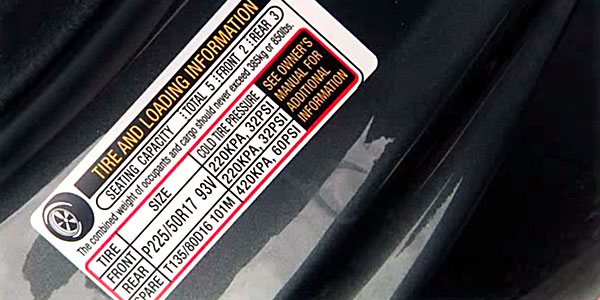 I was wondering, though, if I should make some modifications first. Specifically, I’d like to know if a Jeep Renegade lift kit is a smart investment or if I should just leave it as-is.
I was wondering, though, if I should make some modifications first. Specifically, I’d like to know if a Jeep Renegade lift kit is a smart investment or if I should just leave it as-is.
Heather Bernhard
May 09, 2022
I need to rent a car and recently heard about Turo. Are New Yorkers able to rent using Turo and how does it work?
Sean Boehme
Feb 07, 2022
How many points will a DUI add to my California driving record? I’ve been trying to keep track of any points that I get so that I can get rid of them with classes over time.
Liz Jenson
Feb 07, 2022
Browse All Questions
A 2007 Honda Odyssey has a gas tank size of 21 gallons, feeding into a 3.5-liter V-6 engine.
Cameron Thiessen
Aug 09, 2022
Non-Sufficient Funds (NSF) fees can add up to a significant amount of money, but under certain circumstances you can get them refunded — as long as you build a proper case for doing so.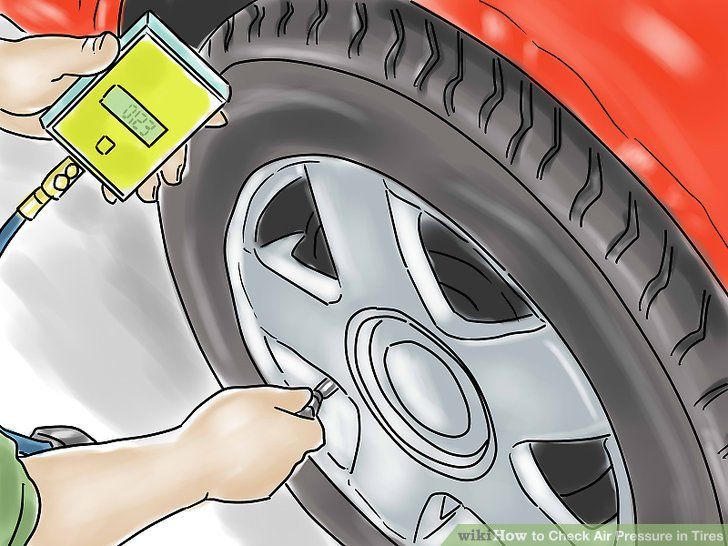
Cameron Thiessen
Dec 08, 2020
driving laws
Homeowners insurance
damage claims
Loan Discounts
Water Damage
Pickup Trucks
Car Insurance Premiums
Young Drivers
Auto insurance
Car Down Payments
Mercedes-Benz
Metromile
Car Sharing
Artificial Intelligence
homeowner insurance
Car Repair
Hybrid Cars
Toyota
negligent driving
misdemeanor
Tennessee
moving
Massachusetts
New Cars
Penalties
Insurance Industry
Manual Cars
No long forms
No spam or unwanted phone calls
Quotes from top insurance companies
Find insurance savings — it's 100% free
Car Insurance
Cheap Car Insurance
Car Insurance Quotes Online
Types of Insurance
Toyota
Hyundai
Mercedes-Benz
Subaru
Chevrolet
Mitsubishi
ALAKAZARCACOCTDEFLGAHIIDILINIAKSKYLAMEMDMAMIMNMSMOMTNENVNHNJNMNYNCNDOHOKORPARISCSDTNTXUTVTVAWAWVWIWY
As the weather cools down, your tire pressure may drop with the temperatures. You might find yourself needing tire inflation. The local mechanics at Chapel Hill Tire are here to help! Here is what you need to know about low tire pressure.
You might find yourself needing tire inflation. The local mechanics at Chapel Hill Tire are here to help! Here is what you need to know about low tire pressure.
Tire pressure is measured in PSI (pound-force per square inch). Common tire pressures range from 32 to 35 PSI, but this can depend on your vehicle type, tire features, tire brand, and the temperature outside. When looking for your recommended tire pressure, you may not find this information listed in your owner’s manual. Instead, tire pressure recommendations are often listed on a sticker inside of the driver’s side door frame.
To check your tire pressure, you will need a gauge. If you do not already have one, these tools are inexpensive and helpful to keep in your car. For an accurate read of your tire pressure, it is recommended that you wait 3 hours after driving before completing the tire pressure check. The friction of your wheels turning can impact your tire temperature and pressure.
Once you are ready to get started, consult the tire information sticker inside of your door frame to determine what your tire pressure should be. Next, connect the gauge firmly to each of your tire’s valve stems. You will see the gauge dial rise. Once it has reached a steady PSI reading, that is your tire pressure.
Most vehicles have automatic tire pressure systems that will warn you when your tire pressure becomes low. Older vehicles do this by examining your tire turn speed. Full tires create a larger rotation than deflated tires. Your vehicle senses when one tire is turning more quickly than the others and alerts you that your tire pressure is low.
Newer vehicles have advanced tire pressure systems that gauge and monitor tire PSI. It is best not to rely entirely on either of these systems, as they are not immune to glitches or inaccuracies.
Perhaps the best way to accurately read your tire pressure levels is with a professional check. Overfilled tires are just as harmful as underfilled tires. A professional technician knows how to achieve this essential balance. Mechanics have professional-grade gauges and the expertise to comprehensively examine your tire health. Best of all, leading mechanics may provide this service for free. For example, the experts at Chapel Hill Tire automatically check tire pressure during each oil change visit. If you are low, our experts will also inflate your tires for free.
Overfilled tires are just as harmful as underfilled tires. A professional technician knows how to achieve this essential balance. Mechanics have professional-grade gauges and the expertise to comprehensively examine your tire health. Best of all, leading mechanics may provide this service for free. For example, the experts at Chapel Hill Tire automatically check tire pressure during each oil change visit. If you are low, our experts will also inflate your tires for free.
If your tires are protected under our Road Hazard Protect plan, you can get free tire refills (among other tire services) at any time.
Low tire pressure is one frequent issue with multiple possible sources. Here is a look at some of the common reasons why your tires may deflate:
During the fall and winter seasons, many drivers begin to find their tire pressure low. The cold weather can cause your tire pressure to lower by 1-2 PSI for every 10 degrees the temperature drops. This is the one tire pressure change that is not caused by air loss. Rather, the air inside of your tire condenses when it is cold and expands when it is hot. This makes the fall and winter seasons popular times for tire pressure checks.
This is the one tire pressure change that is not caused by air loss. Rather, the air inside of your tire condenses when it is cold and expands when it is hot. This makes the fall and winter seasons popular times for tire pressure checks.
Damaged tires are a driver’s worst fears when tire pressure becomes low. Nails and other tire hazards can get kicked up by other drivers on the road, puncturing your tires and releasing some of the pressure. In this case, your tire will need to be patched so it can maintain proper air levels.
Your tires are designed to absorb the impact of bumps on the road. However, frequent road inconsistencies and severe potholes will create a greater tire impact. As your tire absorbs this extra pressure, it may release some of its air.
A bent rim or wheel can disrupt the seal that holds your tire’s air in, leading to low tire pressure or frequent flats.
Have you ever wondered what those small caps on your tire valve stems do? They protect your Schrader valve from dirt, water, dust, and other contaminants. If contamination gets bad enough, the tire Schrader valve can begin to gradually leak air.
Over time, tires gradually release air, even when engaging in your standard driving patterns. Your tires will naturally lose about 1 PSI every month. This is why frequent tire pressure checks are essential. Ideally, you should check them every 1-3 months.
Low tire pressure is more than just an irritating warning light on your dashboard. It can have several immediate impacts on you, your car, and your wallet:
Have you ever tried to ride a bike with deflated tires? It is much more challenging compared to a bike with full tire pressure.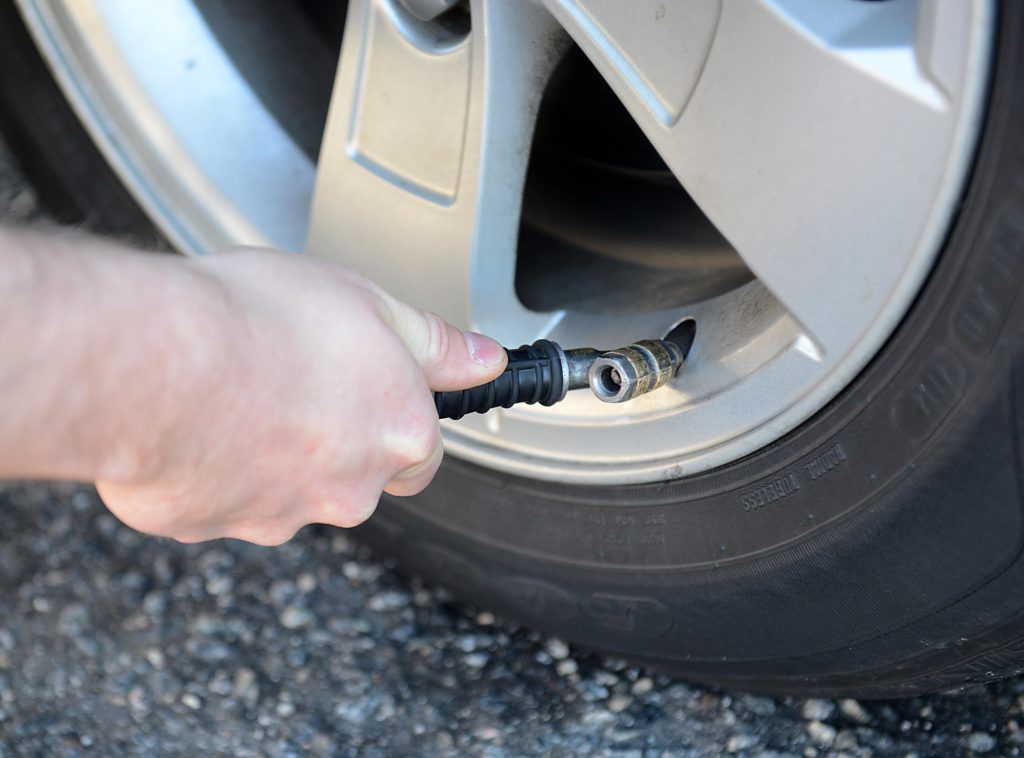 The same logistics can be applied to your vehicle. It has to work harder to run on deflated tires, meaning lower fuel efficiency, more vehicle emissions, and more money spent at the pump.
The same logistics can be applied to your vehicle. It has to work harder to run on deflated tires, meaning lower fuel efficiency, more vehicle emissions, and more money spent at the pump.
Perhaps most importantly, low tire pressure can impact your vehicle handling. The friction between your tires and the road is responsible for vehicle responsiveness. When your tires are running on low pressure, this grip becomes compromised, delaying your braking and making steering less responsive. It can also leave you more vulnerable to flat tires and other issues on the road.
Between low tire pressure and the issues it creates, you can face a wide variety of challenges on the road. Tire structural issues, poor vehicle handling, and any other safety concerns can cause you to fail your annual safety inspection. The lowered fuel economy from deflated tires can cause you to fail your emissions inspection.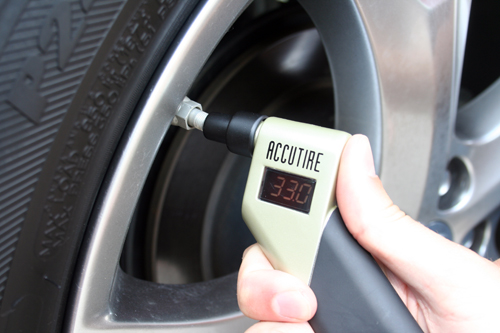
The air inside of your tires maintains your tire’s structural integrity. Poorly-inflated tires will increase the surface area of your tire against the road, causing sidewall damage. This can also create flat tires, bent rims, and other costly issues.
Whether it is a simple tire pressure check or as complex as a rim repair, Chapel Hill Tire is here for all of your tire service needs. Our local mechanics proudly serve drivers throughout the Triangle from our locations in Raleigh, Durham, Carrboro, and Chapel Hill. Make an appointment with our mechanics or give us a call to get started today!
Back to Resources
Home / Articles / How to check tire pressure correctly
The tire contains air, but this air tends to go out and little by little the tire goes down. The pressure in the tire drops, which entails certain consequences.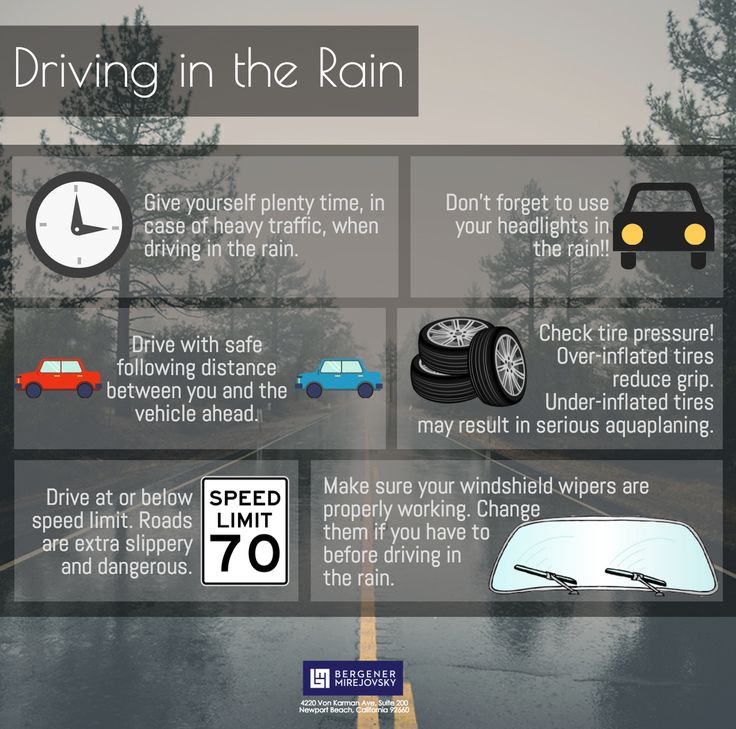 Because the tire distorts more under load, the tire heats up more and wears out much faster. Control accuracy deteriorates and fuel consumption increases. In the worst case, this will lead to loss of control of the car and the tire may burst. Therefore, it is extremely important to constantly check the pressure in car tires. However, this operation requires some explanation.
Because the tire distorts more under load, the tire heats up more and wears out much faster. Control accuracy deteriorates and fuel consumption increases. In the worst case, this will lead to loss of control of the car and the tire may burst. Therefore, it is extremely important to constantly check the pressure in car tires. However, this operation requires some explanation.
In fact, the required tire pressure for various types of machines is usually given for cold tires.
In fact, the required tire pressure for various types of machines is usually given for cold tires. It's a tire that hasn't moved for at least the last two hours. The tire heats up quickly. For example, already after 3 kilometers of slow driving around the city. This means that in most cases the tire will be hot during the pressure test. In this case, it is considered normal that the pressure, which increases with increasing temperature, will be higher than that set for the cold Shiga. More precisely, the pressure in hot tires should exceed the pressure in cold ones by 0. 3 atmospheres. If this is not the case, the pressure should be brought back to normal. For example, let's take a tire in a cold state and a recommended pressure of 2 atmospheres. After the trip, the tire has warmed up, and the pressure gauge shows a pressure of about 2.1 atmospheres. Although this pressure is higher than recommended for cold ones, nevertheless, the tires can be pumped up by about two tenths of an atmosphere, that is, in order to reach the normal figure for a hot tire of 2.3 atmospheres.
3 atmospheres. If this is not the case, the pressure should be brought back to normal. For example, let's take a tire in a cold state and a recommended pressure of 2 atmospheres. After the trip, the tire has warmed up, and the pressure gauge shows a pressure of about 2.1 atmospheres. Although this pressure is higher than recommended for cold ones, nevertheless, the tires can be pumped up by about two tenths of an atmosphere, that is, in order to reach the normal figure for a hot tire of 2.3 atmospheres.
What to do if the pressure gauge reads more than 2.3 tenths of an atmosphere? Then the golden rule applies - never run a burning tire. In other circumstances, more pressure than recommended may be required, such as 0.2 atmosphere more if you plan to drive on the highway for more than 2 hours. Or 0.3-0.4 more, in case of using a trailer. Or even more, if recommended by the manufacturer. As you can see, tire pressure requires special attention. It is necessary to check the pressure at least monthly, and systematically before long trips.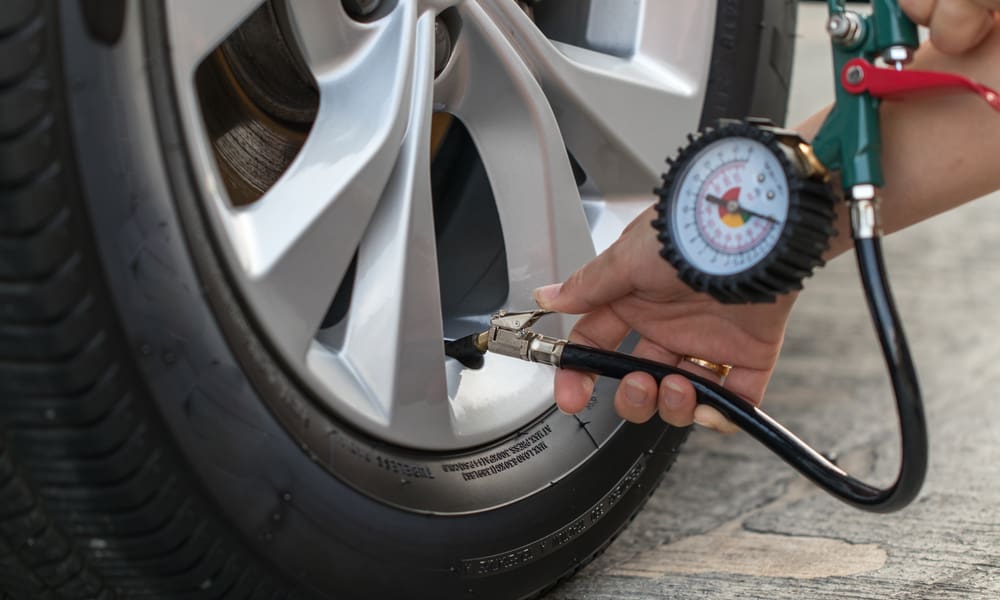 Don't forget to screw the caps back on the nipples. And one more thing. Check the pressure in the spare tire as well.
Don't forget to screw the caps back on the nipples. And one more thing. Check the pressure in the spare tire as well.
How do we work?
Contact us
By phone or leave a request on the site.
The manager of the company will contact you and place an order
Will clarify your order. Give an estimate of the cost of the work.
A master will come to you and perform services
All equipment for this will be in a special van.
If you need advice,
just tell our operator about your problem
+7 (495) 374-89-07
You can also contact us through the website by leaving a request.
| Book a pickup. |
Call now and in 1 minute a mobile tire service will go to you.
| Call a technician |
What should be the pressure in the tires of the car? Does it need to be adjusted and what will happen if the pressure is changed in one direction or another?
- hello lowered the wheel!
— Absolutely?
— No, only from below…
Humor from the Net
Let's start with platitudes. The pressure must be as specified by the vehicle manufacturer. And since the average modern driver usually does not have such information, especially for him, a "cheat sheet" with the necessary numbers is hung on the middle pillar on the driver's side or on the gas tank hatch cover.
The pressure must be as specified by the vehicle manufacturer. And since the average modern driver usually does not have such information, especially for him, a "cheat sheet" with the necessary numbers is hung on the middle pillar on the driver's side or on the gas tank hatch cover.
A relatively rare solution: the "reminder" is located on the gas tank flap.
A relatively rare solution: the "reminder" is located on the gas tank cap.
An important point: pressure should be measured only on cold tires. By the way, especially for pedants: cold tires are those on which the car has been without movement for at least 5 hours.
This "cheat sheet" nestled on the driver's door. An example of how tire pressure recommendations change depending on tire size.
This "cheat sheet" nestled on the driver's door. An example of how tire pressure recommendations change depending on tire size.
An example of how tire pressure recommendations change depending on tire size.
Since car manufacturers allow the use of tires of different sizes, the pressure may also be different. In addition, the pressure in the front and rear tires has the right to both differ and be the same.
And here there is no difference in the recommendations: what is in front, what is behind is the same.
And here there is no difference in recommendations: what is in front, what is behind is the same.
Related materials
Seasonal tire change: everything car owners need to know
Reduced pressure leads to an increase in tire deformation, more heating during wheel rolling, and accelerated wear of the outer tread tracks. Perhaps even a violation of the integrity of the frame. As a result, fuel consumption increases. If you hit a hole in the road, the likelihood of damage to both the disk and the tire is higher.
If you hit a hole in the road, the likelihood of damage to both the disk and the tire is higher.
Increased pressure is an overstrain of the cords, increased wear of the middle part of the tread. In addition, when driving on a bad road, the shocks that are transmitted to the suspension and body will become more noticeable for riders. When hit in a pit, the likelihood of a tire burst increases.
Uneven pressure on all four wheels is the worst thing! At the same time, the car, while driving, inevitably leads the wheels with lower pressure to the side - in fact, sideways movement begins.
Tube tires of the past required a weekly check, especially before the advent of butyl tubes. Then the pressure began to be checked less often, and nowadays, as a rule, they are limited to visual inspection.
Tube tires of the past required a weekly inspection, especially before the advent of butyl rubber tubes.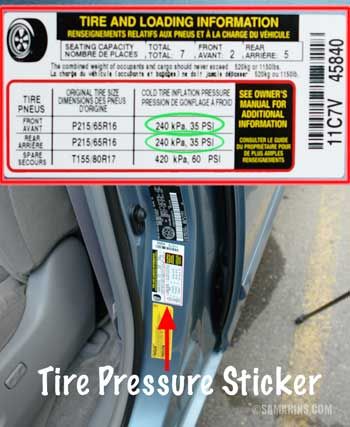 Then the pressure began to be checked less often, and nowadays, as a rule, they are limited to visual inspection.
Then the pressure began to be checked less often, and nowadays, as a rule, they are limited to visual inspection.
It's a good idea to check your tire pressure at least once a month. And before a long journey - just a must.
Related materials
Budget Tire Compressor Test: Wrong Bees
The air pressure in an enclosed space changes by approximately 0.1 bar for every 10 degrees of temperature change. This allows, having installed summer wheels in April, not to worry about the pressure in them until the end of August, when the air temperature begins to drop. Having pumped up the wheels at the end of summer, you can already reach the seasonal shift. But having installed winter tires in October, with the first frosts, you should check the pressure a couple more times: when the temperature drops to minus ten, fifteen, and when it goes over minus twenty. But from the middle of winter until the moment of changing the wheels to summer ones, there is again a period of relaxation.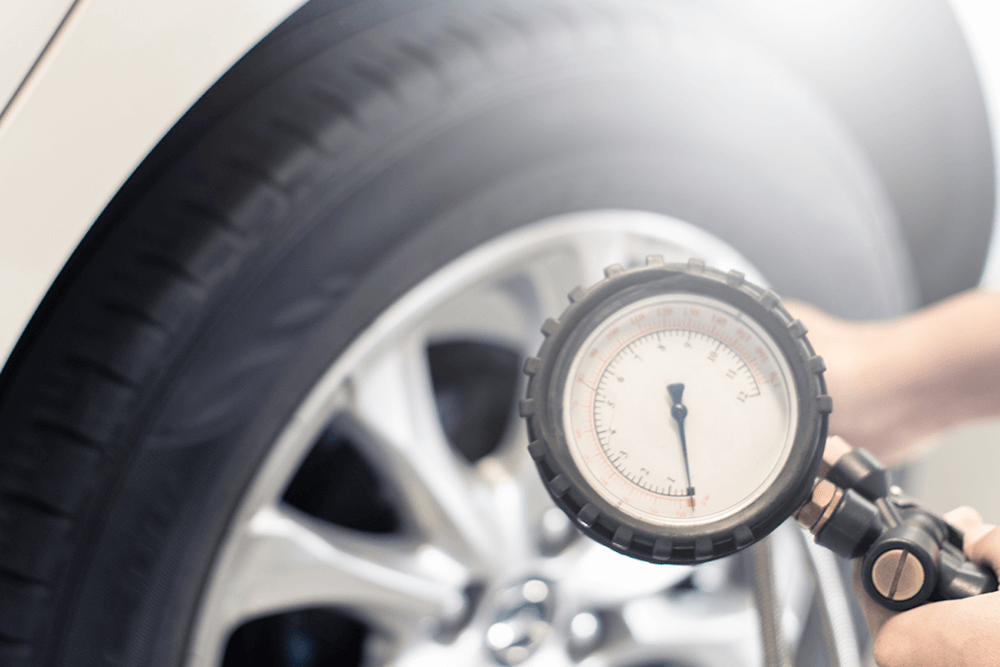
Electronics are increasingly thinking for us. Now, a tire pressure monitoring system is being installed on parts of production cars. Moreover, some simply read the wheel speeds through the ABS sensors: after all, a flat tire rotates faster, since its radius is smaller than that of inflated wheels. There are also sensors that evaluate the amount of air pressure and send information via radio to the "brains" of the car. Such devices can also be purchased separately: sensors - in the wheels, and the receiver - in the car.
By the way, a lot depends on the road you are going to take.
The owner's manuals supplied with the vehicles indicate that it is recommended to increase the pressure by 0.2-0.3 bar before driving for a long time on expressways. We advise you to follow these recommendations on all cars: it will not get worse.
The operating instructions supplied with the vehicles state that it is recommended to increase the pressure by 0. 2-0.3 bar before driving for a long time on highways. We advise you to follow these recommendations on all cars: it will not get worse.
2-0.3 bar before driving for a long time on highways. We advise you to follow these recommendations on all cars: it will not get worse.
I don’t want to discuss overload: this, you see, is not the case. But, unfortunately, many deliberately overload the car several times a year, not only stuffing the interior and trunk to the eyeballs, but also attaching a trailer, which additionally loads the rear wheels of the tractor. In such cases, we advise you to increase the pressure in the rear tires by at least 0.2–0.3 bar. Tires will only thank you.
If you doubt the accuracy of your pressure gauge, then we advise you to check it immediately after leaving the tire shop, where you were set the obviously necessary pressure, to measure it with your own measuring device (separate or as part of the compressor). So you determine whether your pressure gauge is "lying" a lot. For the future, right on the dial, you can put a mark of the correct value.
Of course, it is better to have your own, known to be correct pressure gauge, but such a toy is not cheap.
Of course, it is better to have your own, known to be correct pressure gauge, but such a toy is not cheap.
If terrible ice caught you on summer tires, for example, in the country, and you need to drive some distance along an absolutely icy road by any means, then you should reduce the pressure in the tires to approximately 1.6 bar. Is it bad for tires? Yes. But an accident will cost more. In addition, in such a situation, one does not have to wait for high speed, and overheating of tires at near-zero temperatures most likely will not happen.
Everyone knows what caused the excellent maneuverability of Soviet tanks? That's right: wide tracks, that is, low pressure on the ground. We, having an ordinary, non-all-wheel drive car, are also able to provide it with a similar cross-country ability.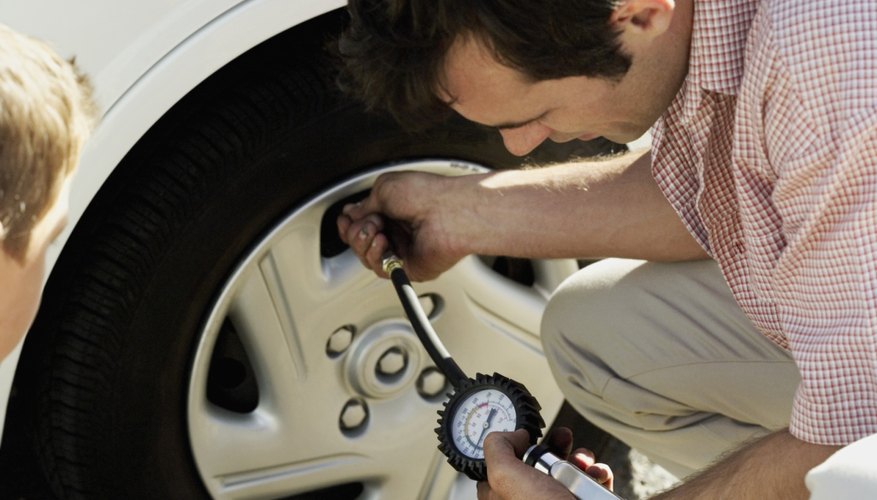 If the wheels of the car sink into sand, snow or sticky mud, then it makes sense to lower the tire pressure. And not only driving, but also driven wheels.
If the wheels of the car sink into sand, snow or sticky mud, then it makes sense to lower the tire pressure. And not only driving, but also driven wheels.
We know from experience that it is often possible to get out of the "black spot" by reducing the pressure to 1.2 bar.
We know from experience that it is often possible to get out of the "black hole" by reducing the pressure to 1.2 bar.
In a very critical situation, if you know that you have a fairly narrow disc and a relatively wide tire (such a wheel has a lower chance of self-disassembly), you can reduce the pressure to 1.0 bar.
Stalled on wet grass? Try to relieve pressure.
Stalled on wet grass? Try to relieve pressure.
Pressure reduction is also useful in other cases - for example, to overcome diagonal hanging. If you reduce the pressure in the wheels on which the car rests, their height will decrease and there will be a chance to “hook” on the suspended wheels.